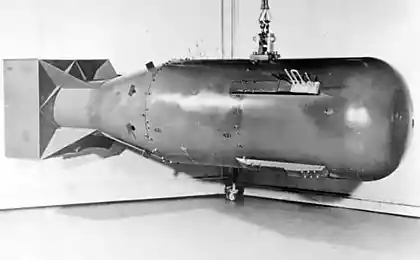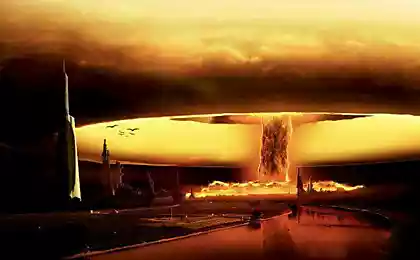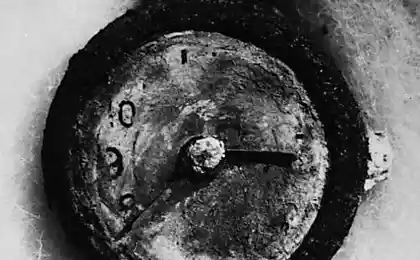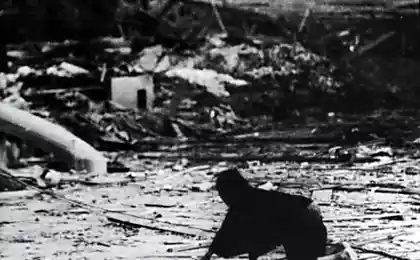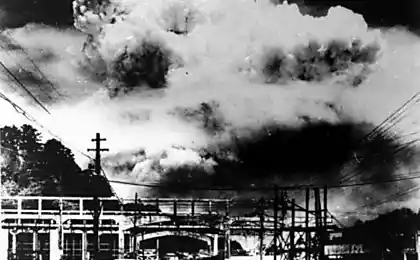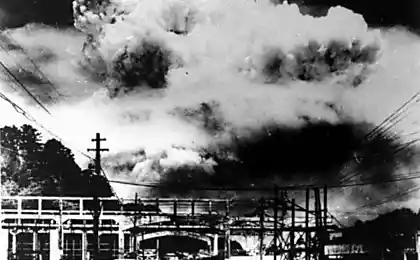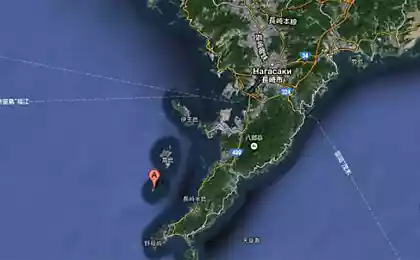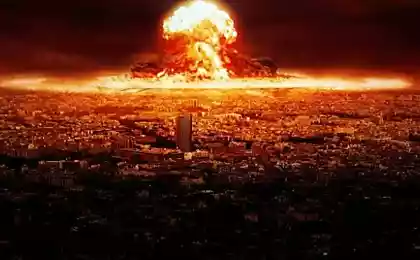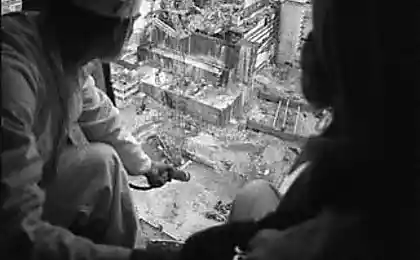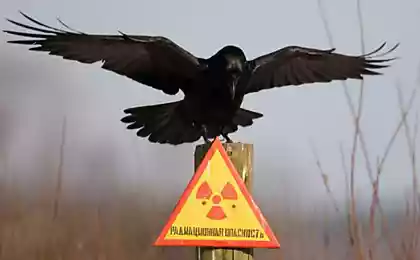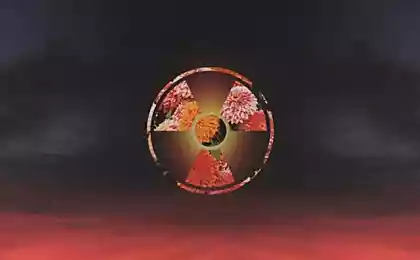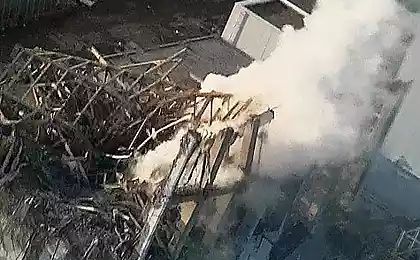798
Why people can live in Hiroshima and Nagasaki, and Chernobyl - no
Consider these items katastrof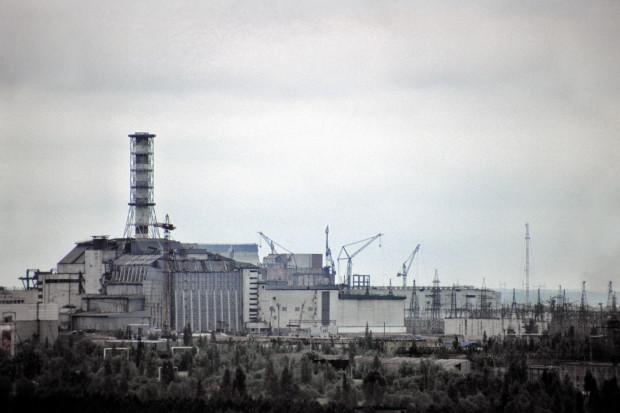
In 1945 on two Japanese cities, Hiroshima and Nagasaki were dropped two atomic bombs. Decades later, on April 26 of 1986, at the Chernobyl nuclear power plant in Ukraine exploded a fourth nuclear reactor.
Today in Hiroshima and Nagasaki safely live about 1, 6 million people, and the so-called Chernobyl exclusion zone with a diameter of about 30 km around the former power remains relatively uninhabited.
The fallen on Hiroshima bomb called "Little Boy" was about three meters long, weighed about 4 to 5 tons and contained about 63 kg of uranium. As planned, a bomb exploded at an altitude of a little more than 600 meters above Hiroshima, the reaction started, and the result was an explosion power of 16 kilotons. Since Hiroshima is located in the plains, "The Kid" has caused great damage to 70 thousand people were killed and more were wounded as much, and almost 70% of the buildings in the city were destroyed. More about 1,900 people after some time died of cancer.
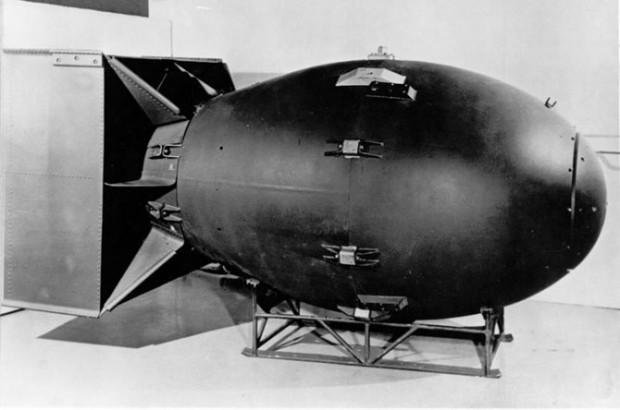
The bomb called "Fat Man" was dropped on Nagasaki, it contained more than six kilograms of plutonium and exploded at an altitude of 500 meters above the city, creating an explosion of 21 kiloton capacity. Since the bomb exploded in the valley, much of the city has not suffered from the explosion. However, from 45 thousand to 70 thousand people died on the spot, another 75 thousand were injured.
With regard to the Chernobyl accident, it was possible to prevent it. The design of the reactor had significant disadvantages. Firstly, when the amount of refrigerant was reduced, the reaction proceeds faster and thus generate more heat: thus, the cooling liquid becomes smaller. Second, instead of reinforced concrete in the construction of the reactor used heavy concrete.
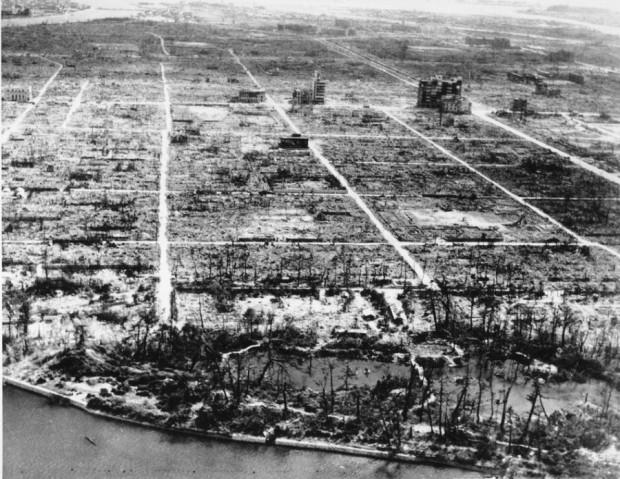
When engineers decided to test for a performance of the fuel remained only six working rods 205. Thus, the cooling water arriving too little, and the one that was in the reactor was rapidly converted into steam with heat, and the remaining graphite rods jammed . As a result, there was an explosion, and splashed about ten tons of nuclear fuel. Precise data on the number of people killed as a result of the radioactive release, it is difficult to find.
So, in the 30-kilometer Chernobyl exclusion zone appeared contamination with radioactive isotopes such as cesium-137, strontium-90 and iodine-13, making it unsafe living here people. In Hiroshima, Nagasaki, and this is not observed. This difference is due to two factors: the reactor of the Chernobyl nuclear power plant was much more nuclear fuel much more efficiently used in the reaction, and in addition, there was an explosion on the ground, not in the air.
via factroom.ru

In 1945 on two Japanese cities, Hiroshima and Nagasaki were dropped two atomic bombs. Decades later, on April 26 of 1986, at the Chernobyl nuclear power plant in Ukraine exploded a fourth nuclear reactor.
Today in Hiroshima and Nagasaki safely live about 1, 6 million people, and the so-called Chernobyl exclusion zone with a diameter of about 30 km around the former power remains relatively uninhabited.
The fallen on Hiroshima bomb called "Little Boy" was about three meters long, weighed about 4 to 5 tons and contained about 63 kg of uranium. As planned, a bomb exploded at an altitude of a little more than 600 meters above Hiroshima, the reaction started, and the result was an explosion power of 16 kilotons. Since Hiroshima is located in the plains, "The Kid" has caused great damage to 70 thousand people were killed and more were wounded as much, and almost 70% of the buildings in the city were destroyed. More about 1,900 people after some time died of cancer.

The bomb called "Fat Man" was dropped on Nagasaki, it contained more than six kilograms of plutonium and exploded at an altitude of 500 meters above the city, creating an explosion of 21 kiloton capacity. Since the bomb exploded in the valley, much of the city has not suffered from the explosion. However, from 45 thousand to 70 thousand people died on the spot, another 75 thousand were injured.
With regard to the Chernobyl accident, it was possible to prevent it. The design of the reactor had significant disadvantages. Firstly, when the amount of refrigerant was reduced, the reaction proceeds faster and thus generate more heat: thus, the cooling liquid becomes smaller. Second, instead of reinforced concrete in the construction of the reactor used heavy concrete.

When engineers decided to test for a performance of the fuel remained only six working rods 205. Thus, the cooling water arriving too little, and the one that was in the reactor was rapidly converted into steam with heat, and the remaining graphite rods jammed . As a result, there was an explosion, and splashed about ten tons of nuclear fuel. Precise data on the number of people killed as a result of the radioactive release, it is difficult to find.
So, in the 30-kilometer Chernobyl exclusion zone appeared contamination with radioactive isotopes such as cesium-137, strontium-90 and iodine-13, making it unsafe living here people. In Hiroshima, Nagasaki, and this is not observed. This difference is due to two factors: the reactor of the Chernobyl nuclear power plant was much more nuclear fuel much more efficiently used in the reaction, and in addition, there was an explosion on the ground, not in the air.
via factroom.ru
Humiliation, criticism and betrayal can make you feel dirty, even if it is not
There robot painter who paints pictures in the genre of abstract art
